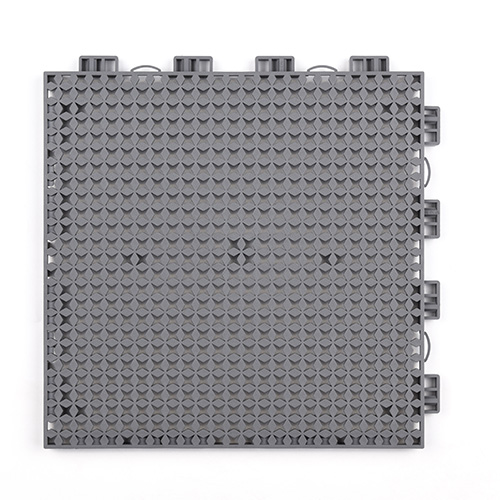nóv . 16, 2024 01:46 Back to list
outdoor basketball court surface
The Importance of Choosing the Right Surface for Outdoor Basketball Courts
When it comes to basketball, the right playing surface can significantly affect both performance and safety. Outdoor basketball courts, often subjected to the whims of the weather and other environmental factors, require surfaces that provide a good balance of traction, durability, and comfort. In this article, we will explore the various types of outdoor basketball court surfaces, their benefits, and what considerations to keep in mind when choosing the right surface for your needs.
Types of Outdoor Basketball Court Surfaces
1. Asphalt Asphalt is perhaps the most common surface used for outdoor basketball courts. It is relatively inexpensive to install and maintain. Asphalt provides a firm playing surface that can handle intense gameplay. However, it can get hot under direct sunlight and may become slippery when wet, which raises safety concerns. With proper maintenance, an asphalt court can last for many years.
2. Concrete Similar to asphalt, concrete is a durable option for basketball courts. It provides a hard surface that allows for consistent ball bounce and is less prone to wear and tear compared to other materials. However, like asphalt, concrete surfaces can become extremely hot in sunny conditions, and they may be unforgiving on players' joints due to their hardness. Proper installation techniques can help mitigate issues related to cracking and surface wear.
3. Rubber Rubberized surfaces are gaining popularity due to their shock-absorbing qualities. They provide a softer landing for players, reducing the risk of injury. Rubber surfaces are also non-slip, which makes them a safer option in wet conditions. However, they can be more expensive than asphalt or concrete and may require more maintenance to preserve their condition over time.
4. Acrylic Coatings Acrylic surfaces are another excellent choice for outdoor basketball courts. These coatings are often applied over concrete or asphalt and provide a smoother texture for better ball control. They are available in various colors and can enhance the visual appeal of the court. Additionally, acrylic surfaces offer good traction and are resistant to UV rays and harsh weather conditions. However, the installation process can be more complex and labor-intensive.
5. Composite Surfaces These surfaces are made from a combination of materials, such as rubber and polypropylene. They are designed to provide the best features of multiple surfaces, combining durability, shock absorption, and aesthetic appeal. Composite surfaces are often modular, making them easy to install and replace if damaged. They are ideal for community courts where multiple sports might be played.
outdoor basketball court surface

Key Considerations When Choosing a Surface
1. Budget Cost is often the first factor to consider. While some surfaces may have a lower initial cost (like asphalt), you need to account for long-term maintenance and potential replacement costs. Investing in a higher-end surface that requires less maintenance might save you money in the long run.
2. Weather Conditions Depending on your geographical location, the chosen surface should be able to withstand local weather conditions. Areas with heavy rainfall may benefit from a rubber or acrylic surface that offers better traction.
3. Player Safety Consider the injury risks associated with harder surfaces like concrete and asphalt. If the court will be used primarily by youth or casual players, a softer surface might be a better choice.
4. Usage Frequency High-traffic courts may wear out faster, making durability a critical factor. For courts that will be used regularly, investing in a more durable surface can ensure that it remains in good condition for a longer time.
5. Maintenance Requirements Different surfaces come with varying maintenance needs. Rubber and acrylic surfaces may require more upkeep compared to asphalt or concrete. Make sure you understand what is involved in maintaining your chosen surface.
Conclusion
Selecting the right surface for an outdoor basketball court requires careful consideration of various factors, including budget, climate, safety, and maintenance. With a wide range of options available—from traditional asphalt to advanced rubber and composite surfaces—there is a solution to suit every need. Ultimately, choosing the right surface can enhance the playing experience and ensure that basketball can be enjoyed safely for years to come. By investing in the right surface, you not only improve the quality of play but also contribute to the longevity of your outdoor sports facility.
-
SmartAgri Solutions-Smart Technology|Precision Irrigation&AI-Driven Crop Monitoring
NewsJul.12,2025
-
Outdoor Pickleball Tape for Durable & Weatherproof Court Marking Easy Apply Outdoor Court Tape Solutions
NewsJul.08,2025
-
Best Outdoor Court Shoes for Pickleball – Durable, Comfortable & Non-Slip Performance
NewsJul.08,2025
-
Premium Plastic Pickleball Court Tiles - Durable Commercial Plastic Flooring Solutions
NewsJul.07,2025
-
Indoor Pickleball Court Dimensions Guide Standard Sizes & PDF Download
NewsJul.07,2025
-
Apex Outdoor Pickleball Courts – Durable & Customizable Surfaces for Your Space
NewsJul.07,2025

